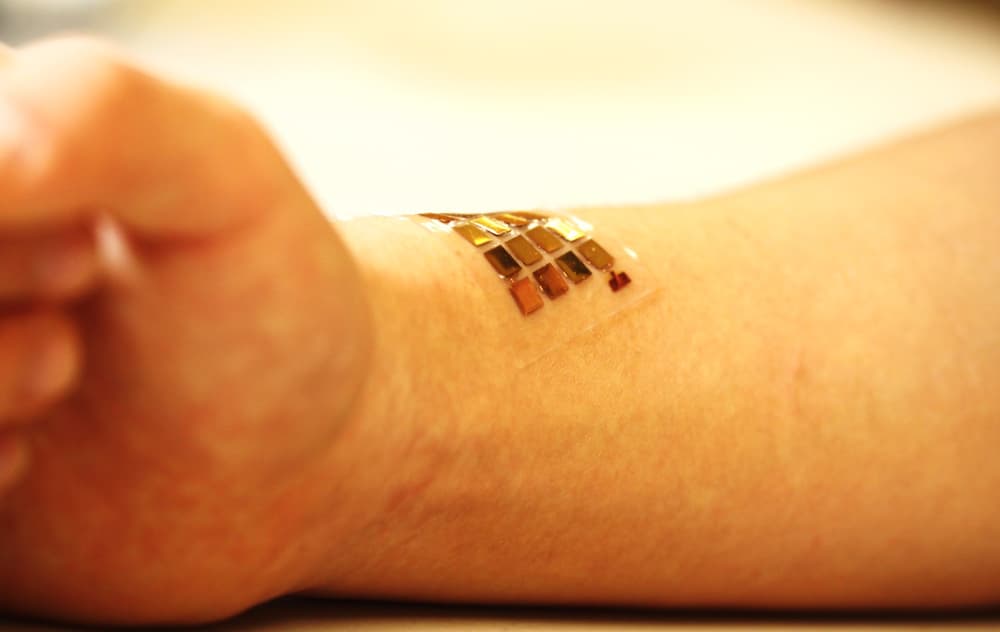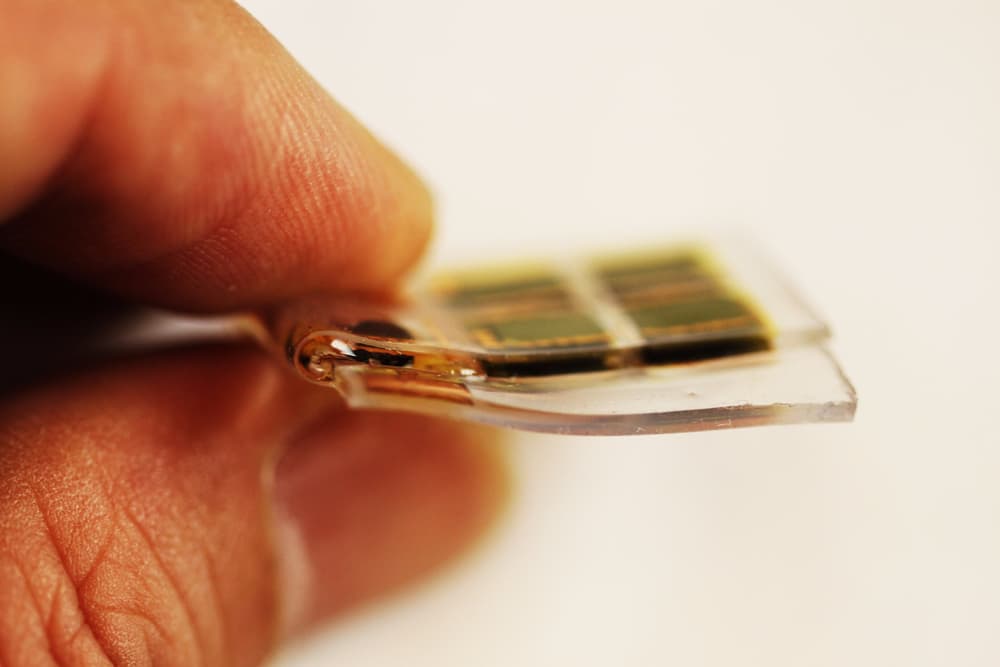
Scientists have devised a method to power wearable electronics through a soft, millimeter-scale battery that may stretch over the skin like a Band-Aid. Led by the University of Illinois’s material scientist John Rogers, the research team aimed to create a power solution that is lightweight and has mechanics suitable for applications that wearable devices offer.
While many wearable devices require an external power source and must be removed from a consumer’s body to recharge, Rogers and his colleagues sought for an alternative method by developing a new type of battery. The team cut an ordinary lithium ion battery into small ultrathin tiles. Connecting the tiles with wires, the scientists then embedded these components in a soft, rubbery material and coated them with a stiff rubber. This process resulted in a thin waterproof battery that now had the ability to stretch, as the wires connecting tiles were longer than the space between them. Further experiments proved that the battery can even stretch up to 30 percent while still generating a charge.
The project began as early as 2013, with the research team – compiled of representatives from the University of Illinois at Urbana-Champaign and Northwestern University – well aware of the trials they had to tackle. “Batteries are particularly challenging because, unlike electronics, it’s difficult to scale down their dimensions without significantly reducing performance,” said Rogers in an interview with BBC News in 2013.

By layering tiny solar cells, biosensors, and chips on top of the battery cells, the team further innovated their design, creating a solution that can be integrated with a wide range of devices and power sources. For example, the battery can be applied to human skin to enable an unlimited current of biosensor data. Further plans for the battery’s use even include integration into clothes, causing its sensors to capture bodily signals 24 hours a day without being removed for a recharge. The study also hints that the battery can be recharged wirelessly.
The stretchable battery joins a group of other prototypes that conform to the human body, but, like these earlier designs, it isn’t quite ready for mass usage yet. However, its great potential is undeniable. “The most important applications will be those that involve devices integrated with the outside of the body, on the skin, for health, wellness, and performance monitoring,” explained Rogers.
Source: Gizmag and TechXplore
Advertisement
Learn more about Electronic Products Magazine





